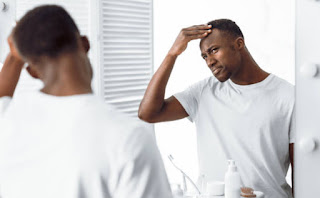Hair Growth Demystified
As the vast majority know, nothing in
life is straightforward. The equivalent can likewise be said for hair
development. Developing the hair that we as a whole underestimate, is a
mind-boggling cycle and something that not very many individuals comprehend.
Many individuals attempt to work on the strength of their hair utilizing hair
development items and medicines bound with hair development nutrients and so
forth without knowing how, if or why these things will work on their hair.
The opposite side of the coin is when
individuals need to eliminate their hair yet neglect to comprehend the science
of hair development and which medicines can do what. Did you have any idea
about that the hair on your body is basically dead? There's a long way to go
about hair development yet dread not, you will before long be a hair science
master!
Life structures of the Hair
Assuming you investigate the chart
above, you will see that the hair comprises of a follicle underneath the skin
layer. The hair that you see jutting from the follicle is the hair that you see
on your body. The follicle is surprisingly mind boggling and comprises of a few
unmistakable layers which have individual capabilities in the hair development
process. At the foundation of the hair follicle, you find what is known as the
dermal papilla. Vessels underneath the hair follicle, supply blood through the
dermal papilla and to the base piece of the hair strand which is known as the
bulb.
Do you want Best Hair Growth Remedies?
The hair follicle is encircled by an
internal sheath and an external sheath which run the length of the hair up to
the sebaceous (oil) organ. You will likewise find the 'erector pili' which is
the muscle that raises your hairs when you get 'goose pimples'. The shaft of
hair itself is comprised of three layers. Each layer comprises of dead protein
cells known as 'keratin'. The 'medulla' is the name for the deepest layer. The
subsequent layer is the 'cortex' which gives the body of the shaft. This layer
is primarily liable for the shade of your hair as it contains the pigmentation.
The third layer is known as the 'fingernail skin' and includes covering cells
which give the hairs sheen and shine.
What Happens When Hair Grows?
Hair development can be characterized
into three primary phases of development. On normal human scalp hair will
develop between 0.3mm-0.4mm each day. Additionally recollect that hair doesn't
all develop on the double. While some hair follicles are beginning another
hair, some are losing an old hair and some perhaps partially through a hair.
For this reason, some long-lasting hair expulsion strategies require different
medicines to get every single hair.
The Catagen Growth Phase
The Catagen stage happens soon after
the anagen stage (see later). Roughly 3% of your hair will be in this stage at
any one time. This is a temporary stage that takes around half a month. During
this time, a 'club hair' is framed. This is the point at which the hair
follicle appends to the actual hair and trims the blood supply off from the
developing hair. At the point when this stage is finished, the Telogen stage is
placed.
The Telogen Phase
This stage is otherwise called a
'resting period' for the hair. Around 10% to 15% of your hair will be in this
stage. This stage can endure as long as 100 days. During this stage, the club
hair is totally framed. On the off chance that you haul these hairs out, they
have a hard white material at the root. You can shed upwards of 100 Telogen
hairs each day!
The Anagen Phase
The Anagen stage is the business end of the interaction. This is the point at which the cells in the base of the hair are partitioning quickly and adding to the hair shaft. On the scalp, this stage can keep going quite a while; approx. 2 to 6 years. As of now, an until now obscure sign makes the hair enter the Catagen stage where the cycle starts once more.



Comments
Post a Comment